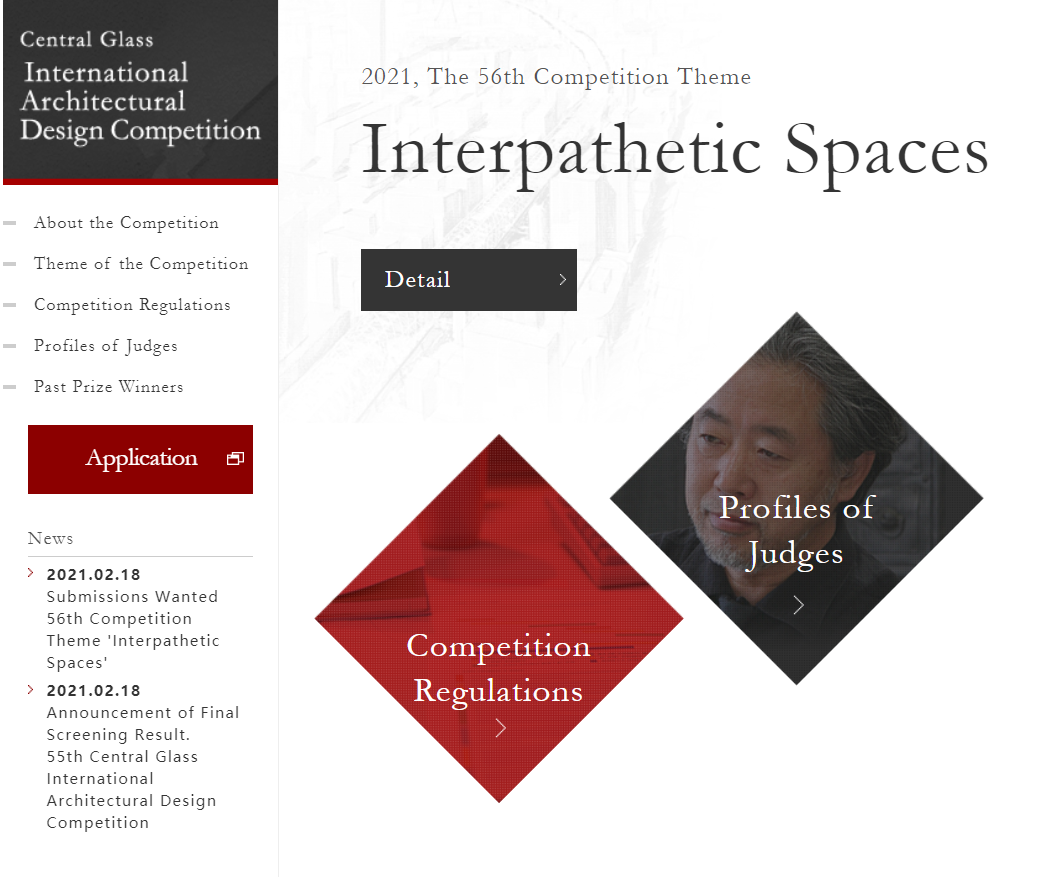On October 12, 2021, the results of the 56th Japan Central Glass International Architectural Design Competition were announced. The entry “THE BLEND OF BATHHOUSE AND GALLEREY” from the School of Architecture, Tianjin University won the Merit Prize. This entry was co-finished by Chen Hangxing and Lai Dingxia. It is the second time that the school has won the international award, the first time being in 2014 by a student named Li Siqi.
The Central Glass International Architectural Design Competition has been held every year since 1966 and became an international event in 1976, when overseas entries were first invited. It now has become one of the most recognized and difficult competitions in the global architectural competitions.
The 56th Competition theme is “Interpathetic Spaces”-How we ought to live in an age characterized by both digital progress and the coronavirus pandemic?

The competition asks the competitors to propose “interpathetic spaces” that can actually be experienced by one's body. “Interpathy” means feeling things together with other people and communicating feelings to those people. It is not limited to one's own physical feelings; it requires concern for others and actual spaces that appeal to people's senses and that cannot be realized with digital technologies.
The initial screening was held on September 14. A total of 268 entries were submitted. As a result of the first round of deliberations, 7 entries were promoted to the Final Screening, and 10 entries were selected for Merit Prizes.
THE BLEND OF BATHHOUSE AND GALLEREY tries to endow the bathhouse with the function of exhibition, blending art museums and baths, creating a new model of bath that simultaneously engages multiple senses.
“The design disassembles the museum + into two parts. One is the exhibition space in the traditional sense, and the second is the space itself as a place for people to meditate and experience. The bathing space and the art gallery are thus linked and intertwined,” Dr. Xin Shanchao, lecture at the School of Architecture explained, “Light infiltrates the interior of the building from the gaps. With the shadow, it becomes dynamic over the rotation of day and night, which enriches the exhibition space and gives the bathing space a cave-like experience.”
Below are the design pictures of the entry.

The city baths are situated underground, and the art gallery is situated on the first and second floors. The art museum and the bathhouse are interpenetrated but visually separated from each other. In the art museum, you can feel the spatial atmosphere and the change of brightnesss and darkness of the bathing area on the ground floor, but you cannot see people moving in the bathing area. In the public bath, you can view the art exhibits around you while swimming forward, and enjoy the art in the most comfortable way, and the function of the art museum extends to the public bath at the same time.


In order to prevent the hot and humid environment of the ground floor baths from affecting the viewing experience and the life of the artworks, the exhibits are mainly works that cannot be affected by water vapour. The gallery is partially closed off from the baths so that the exhibits are not affected by water vapour, and the space that is partially open to the baths is only used as a transport and activity space.
In order to ensure the privacy of the bath users, the gallery and the baths are connected by a spatial atmosphere, but the space is blocked from communication between the two groups of people by using sheet walls, 2,000mm frosted glass and staggered floors.
By the School of Architecture
Editor: Yang Fan & Eva Yin






